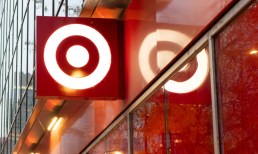Open banking is a reality in the United Kingdom, and coming soon to American shores in its digital-first dazzle, in no small part built on foundational work done in markets like the U.K.
“Open banking usage in the U.K. doubled in 2020, and open banking technology powered 6 billion calls through FinTech APIs and more than 4 million consumer transactions, according to the Open Banking Implementation Entity (OBIE), the body overseeing open banking in the country,” according to PYMNTS March 2021 Open Banking Report, a TrueLayer collaboration.
By comparison the OBIE reported 320,000 open banking transactions in 2018, with consumers choosing the new channel for its simplified financial decision-making, improved access to borrowing and diversity of payments options.
As digital-first open banking arrives in the U.S., many will look to work in the U.K. especially for inspiration and specifications when creating ever-better payments experiences.
Counting “more than 14,000 financial institutions and an ever-growing roster of FinTech startups,” the March 2021 Open Banking Report notes that the U.S. is “likely to become the next frontier of open banking evolution, as its consumers have a growing interest in accessing innovative payment experiences while still retaining control over their data.”
Innovation, Legislation Shaping The Near Future
Advertisement: Scroll to Continue
The March 2021 Open Banking Report is a reminder of just how much open banking activity has blossomed during the pandemic period. A springtime metaphor is nearly in order as a locked-down world emerges to find true open banking suddenly available, or very soon to be.
The report enumerates regions including the European Union, the U.K., Hong Kong and Australia having “enacted draft or current legislation to support open banking innovation,” pointing to PSD2 legislation in Europe mandating data and privacy standards for APIs, and Australia’s Consumer Data Right Act to “support a direct push for new open banking initiatives by creating a proposed framework for consumers to securely share their data with any third parties of their choice,” adding that “The U.S. has yet to address open banking with a comprehensive body of legislation, but open banking-enabled payments have spurred numerous instant and contactless payment innovations that have been adopted by merchants, FinTech startups and the government.”
Within the overall growth trend, the Open Banking Report takes particular note of the role of mobile is playing, stating that “the mobile channel is growing faster than eCommerce as a whole and is expected to make up 51 percent of total eCommerce value in the U.K. and Europe by 2023. The trend toward digital wallets using bank-powered payments is also very visible in China, India and emerging markets, as well as in the Nordics with Swish, for example.”
Open Banking Use Cases Show Possibilities
Use cases are proving the value of open banking applications versus a number of post-pandemic payments challenges, and as banks and FinTechs focus more on experience.
Noting, “An international wire stops at seven different places along the way,” Charles Rosenblatt, chief strategy officer at Payoneer, told PYMNTS in the Open Banking Report that “Open banking technology offers another powerful benefit: robust transaction management that maintains high speeds at scale.” Another valuable use case is that of U.K.-based Plum, which uses open banking APIs to let data “travel seamlessly between Plum and external financial accounts, allowing Plum’s AI-driven analytics to calculate optimal savings and investment amounts for clients who have elected to automate their account deposits.”
The world of financial possibilities afforded when open banking breaks big in the U.S. — and that day is fast approaching — will impact merchants, small and medium-sized businesses (SMBs), FinTechs, PSPs and other entities in the ecosystem differently. What they can all expect, however, are new experiences in fast contextual payments that don’t behave like legacy banks or card products.
For today’s digerati, open banking is banking as it should be. As it makes its true U.S. debut in 2021-22, industry players are watching and planning ahead for open banking ubiquity.
This much is certain, as the March Open Banking Report concludes, “Merchants, marketplaces and platforms will want to be able to connect their apps securely to any bank account globally, and more consumers will demand the ease of one-click logins and payments on all their devices. Companies intent on remaining competitive must develop forward-looking solutions to adapt their business models to the future demand for frictionless payments.”




